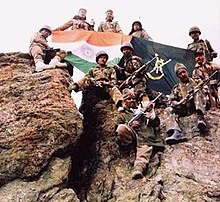the 1999 : Kargil War
Title: The 1999 Kargil War: A Landmark Conflict in South Asian History
Introduction:
The Kargil War of 1999 stands as a poignant chapter in the annals of Indo-Pakistani conflicts, altering the geopolitical landscape of South Asia and leaving an indelible mark on the collective consciousness of both nations. Spanning from May to July 1999, this conflict erupted in the Kargil district of Indian-administered Jammu and Kashmir, escalating tensions between India and Pakistan to the brink of a full-scale war. The intricate dynamics of this conflict, its origins, military strategies, diplomatic maneuvers, and eventual resolution provide crucial insights into the complex relationship between the two nuclear-armed neighbors.
Ayushman
Origins and Context:
The roots of the Kargil conflict can be traced back to the longstanding territorial dispute over the region of Kashmir, which has been a contentious issue between India and Pakistan since their independence in 1947. The Kargil sector, located along the Line of Control (LoC) separating the two countries in the mountainous region of Jammu and Kashmir, became the focal point of this conflict.
In early 1999, Pakistani military forces, with the covert support of their government, infiltrated into Indian-controlled territory in the Kargil sector. This incursion caught the Indian security establishment off-guard, as the infiltrators occupied strategic heights overlooking key highways and military installations, posing a serious threat to Indian supply lines and communication networks in the region.
Ayushman
Military Strategies and Operations:
The Kargil War witnessed intense military engagements characterized by fierce ground battles, artillery duels, and aerial bombardments in the treacherous Himalayan terrain. The Indian Army launched Operation Vijay, a large-scale military operation aimed at evicting the Pakistani intruders from the captured positions. The operation involved a combination of infantry assaults, artillery barrages, and air strikes to dislodge the entrenched enemy forces.
Ayushman
The challenging mountainous terrain posed significant logistical and operational challenges for both sides, with soldiers contending with extreme weather conditions and rugged terrain. Despite facing daunting odds, the Indian armed forces displayed remarkable courage, resilience, and tactical acumen in reclaiming territory inch by inch from the intruders.
Ayushman
Meanwhile, the Pakistani military, under mounting international pressure, denied any involvement in the infiltration and sought to portray the conflict as a localized insurgency by Kashmiri militants. However, evidence of Pakistani military support for the infiltrators, including the presence of regular army personnel and sophisticated weaponry, undermined Pakistan's claims of non-involvement.
International Diplomacy and Escalation:
The Kargil conflict triggered a diplomatic crisis in the region, with the international community expressing grave concern over the escalating hostilities between two nuclear-armed neighbors. Diplomatic efforts were initiated by various countries, including the United States and China, to defuse tensions and facilitate a peaceful resolution to the crisis.
Ayushman
The United States played a pivotal role in brokering talks between India and Pakistan, urging restraint and advocating for a diplomatic solution to the conflict. President Bill Clinton's intervention, coupled with diplomatic pressure from other world powers, helped prevent the situation from spiraling into an all-out war.
Ayushman
Despite international mediation efforts, the conflict witnessed several incidents of heightened tensions, including the downing of a Pakistani naval aircraft by Indian forces and retaliatory missile strikes by Pakistan. The volatile situation raised concerns of a wider conflagration in the region, prompting urgent diplomatic initiatives to prevent further escalation.
Ayushman
Resolution and Aftermath:
As the conflict entered its third month, Indian forces made significant gains in recapturing territory from the intruders, inflicting heavy casualties on Pakistani troops and forcing them to retreat across the Line of Control. The Indian military's decisive operations, coupled with diplomatic pressure and international condemnation of Pakistan's actions, contributed to the eventual resolution of the crisis.
Ayushman
In July 1999, under mounting pressure from the international community and faced with the prospect of military defeat, Pakistan agreed to withdraw its forces from the Kargil sector, restoring the status quo ante along the Line of Control. The Kargil War ended with a clear victory for India, albeit at a considerable cost in terms of lives lost and resources expended.
Ayushman
The aftermath of the Kargil conflict had far-reaching implications for India, Pakistan, and the wider region. In India, the war was seen as a testament to the resilience of its armed forces and bolstered national unity and pride. However, it also highlighted the need for greater vigilance and preparedness along the disputed border with Pakistan.
Ayushman
In Pakistan, the Kargil War was met with mixed reactions, with some sections of society viewing it as a heroic endeavor to support the cause of Kashmiri self-determination, while others criticized it as a misadventure that had strained relations with India and led to international isolation.
Ayushman
Conclusion:
The Kargil War of 1999 remains a significant milestone in the history of Indo-Pakistani relations, underscoring the enduring tensions and unresolved issues that continue to define their complex relationship. While the conflict was eventually resolved through diplomatic means, its legacy continues to shape perceptions, policies, and strategic calculations on both sides of the border. As India and Pakistan navigate the complexities of their relationship in the 21st century, the lessons learned from the Kargil War serve as a stark reminder of the dangers of brinkmanship and the imperative of seeking peaceful resolutions to long-standing disputes.


Comments
Post a Comment